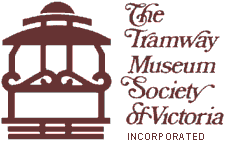
| About TMSV | Visitor information | Our collections |
Current projects | Feature articles | Join TMSV | Useful links | TMSV news |
 |
|||||||||
|
|||||||||
| > Index of articles > Previous article > Next article Fares please! > Beginnings > Seven plus one > Roaring Twenties > The Great Depression > The War Years > Post-war doldrums > The Risson era > Descent into the red > Assessment of leadership > Legacy of the M&MTB > Financial summary > Bibliography |
Fares please! An economic history of the Melbourne & Metropolitan Tramways BoardDebt-driven survivalSo why did the Melbourne tramways survive the anti-tram sentiment of the 1950s and 1960s? Very simply, the State Government could not afford to write off the investment in the tram system, as it would have needed to depreciate fully infrastructure worth in excess of 25 million dollars, as well as covering the outstanding loan liability of the Board. To a large degree the Board’s survival was the result of the original legislation enabling the Board requiring it to maintain a generous sinking fund for realistic depreciation provisions. Therefore the M&MTB could maintain its assets in good condition as a result of this conservative financial management strategy. In contrast, the Sydney tramway system made no such provisions. During the boom years of the 1940s, when the M&MTB was making profits due to record patronage, the Sydney system was making a loss on every passenger, as its worn out rolling stock and infrastructure required excessive maintenance to cope with the wartime traffic increases. Therefore, despite record revenues and patronage, the Sydney tramways became more run-down with no financial reserves to remedy the situation when peace returned.
Footnote[31] Australian tramways closed post-World War 2 were:
|
![]() Last
updated 15
December 2006.
Last
updated 15
December 2006.
![]() Content
copyright © Russell
Jones 2001-6. Reproduced with permission.
Content
copyright © Russell
Jones 2001-6. Reproduced with permission.